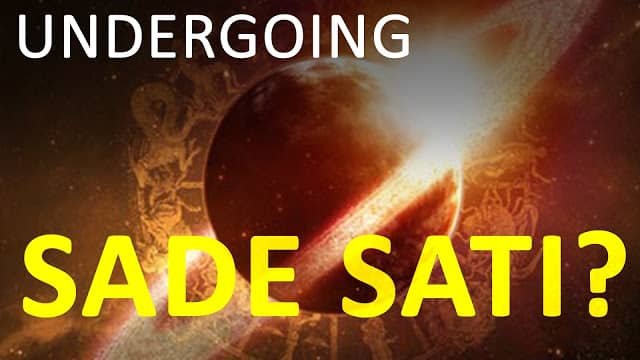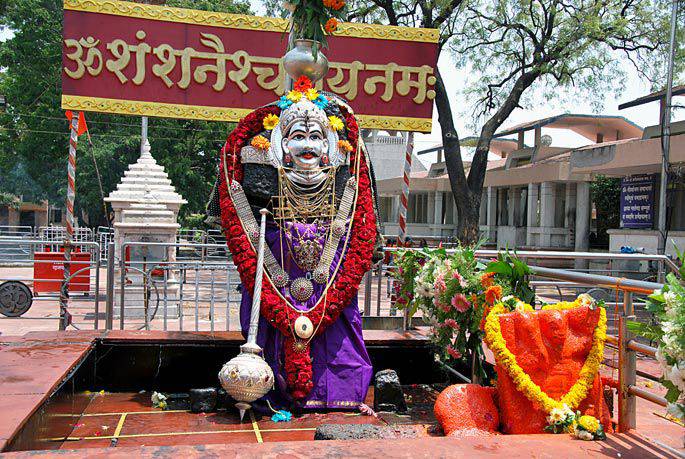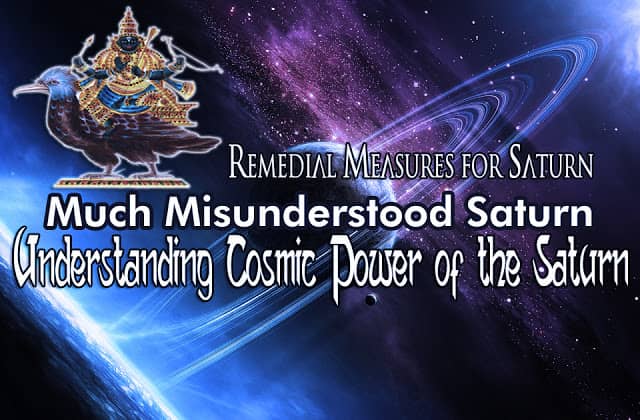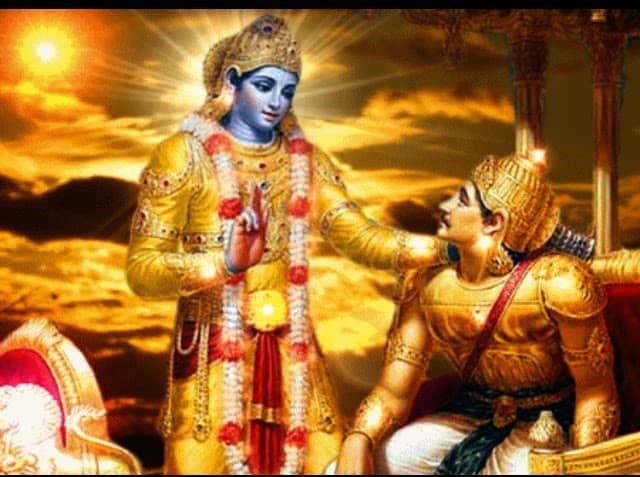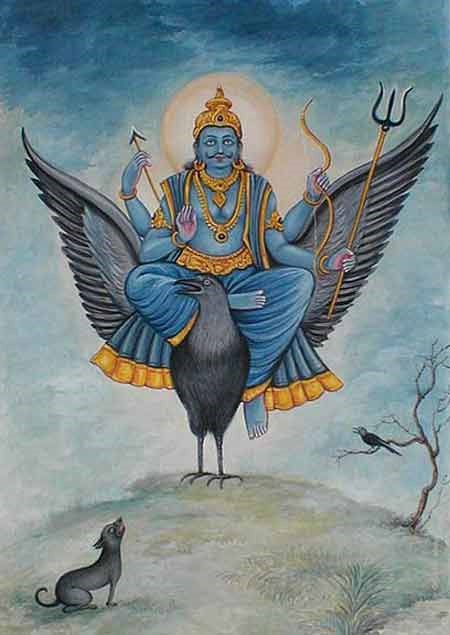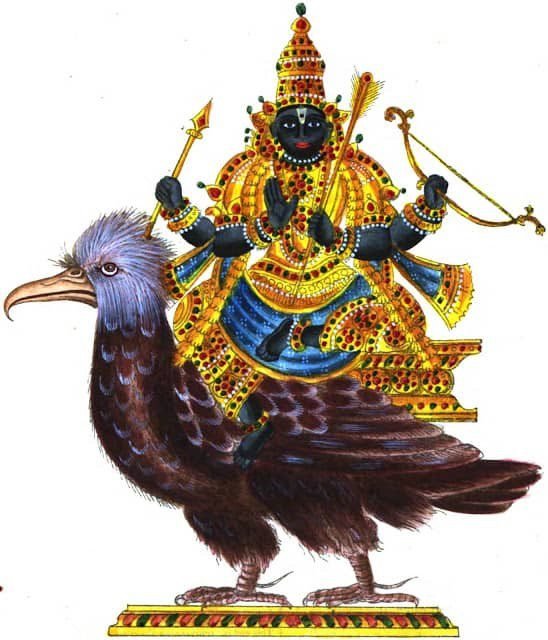The Saturn, Mysterious Shani Sadesati and Karmic Remedies : Therapeutic Guide of Saturn – Part 2
The Saturn, Mysterious Shani Sadesati, and Karmic Remedies: A Therapeutic Guide to Saturn, Part 2
Compiled, Researched & Written by Rocky Jamwal | Vedic Siddhanta | Author
Introduction
The phenomenon known as Shani Sade Sati holds considerable importance within the realm of Vedic astrology, garnering the interest of both astrologers and individuals throughout an extensive period of time. The prevailing belief suggests that it exerts a significant influence on the human existence, affecting diverse domains like professional pursuits, interpersonal connections, and physical well-being. This blog post aims to explore the complexities of Shani Sade Sati, its impacts, and the potential remedial actions that individuals might undertake to navigate through this phase. Shani Sade Sati refers to a significant astrological phenomenon in Hindu astrology that is associated with the planet Saturn.
The term “Shani Sade Sati” pertains to the celestial phenomenon wherein the planet Saturn (referred to as Shani) traverses three consecutive zodiac signs, namely the sign preceding an individual’s moon sign (known as Janma Rashi), the moon sign itself, and the subsequent sign. This transit spans a duration of seven and a half years. This particular transit may present difficulties, as Saturn is commonly linked to the concepts of discipline, duty, and diligent effort.
The Shani SadeSati encompasses three distinct phases:
Initial Stage: During this initial phase, the planet Saturn undergoes a transition through the zodiac sign that precedes the sign occupied by the moon. There is a prevailing belief that this phenomenon has a significant influence on an individual’s psychological and emotional state, frequently resulting in feelings of unease and apprehension.
The second phase is characterised by the transit of Saturn through the sign of the moon. The aforementioned phase is often regarded as having a significant influence on multiple facets of existence, including but not limited to one’s professional trajectory, interpersonal connections, and overall well-being. During this particular period, individuals may encounter many barriers and problems.
The third part of the Saturn transit involves the movement of Saturn to the zodiac sign immediately following the moon sign. It is widely considered that this particular phase is associated with a notable sense of relaxation and steadiness following the various hardships encountered in preceding stages.
The influence that Shani Sade Sati had
It is possible for people to face a variety of difficulties and roadblocks in a variety of facets of their lives during the season of Shani Sade Sati. The consequences of this phase might differ from person to person based on where Saturn is located in the individual’s birth chart and what sign the individual’s moon is in.
The following are some of the more common effects of Shani Sade Sati:
- Difficulties relating to finances
- Concerns over one’s health
- Issues with interpersonal connections
- Professional setbacks
- A state of emotional upheaval
Alternative Treatments and Safety Measures

Even though Shani Sade Sati might bring about difficulties, there are a number of solutions and preventative measures that folks can do to lessen the impact of its adverse consequences.
1. Praise and Recitation of Mantras
It is possible to lessen the effects of Shani Sade Sati by engaging in regular worship of Lord Shani and by reciting mantras that are dedicated to Saturn. There is a widespread consensus that the Shani Gayatri Mantra and the Shani Beej Mantra are particularly useful.
2. Acts of Benevolence and Contributions
The potentially negative impacts of Saturn can be mitigated by participating in charitable activities and making financial contributions to those who are less fortunate. On Saturdays, it is considered fortunate to make donations of black sesame seeds, black clothing, or anything that have been ironed.
3. The Use of Gemstones for Their Healing Properties
When worn, alternate gemstones such amethyst (also known as jamunia) might help mitigate the unfavourable effects of Saturn’s energies. However, before choosing to wear any gemstone, it is essential to discuss your options with an experienced astrologer.
4. Carry out the necessary remedial rites.
Bringing Saturn into harmony through the performance of rituals such as the Shani Puja or the Shani Homa can help mitigate the effects of the Shani Sade Sati. Before engaging in these ceremonies, it is best to obtain the advice of an experienced astrologer or priest in order to avoid any missteps.
5. Practice’s of Yoga and Meditation
Regular practise of meditation and yoga might assist persons in keeping their mental and emotional equilibrium during the trying times of Shani Sade Sati. These practice’s have the potential to alleviate stress as well as improve general well-being.
6. Good Karma and Self acceptance
One can make amends for their previous misdeeds and transform unfavourable circumstances into advantageous ones if they repeat the actions of those who have done good. Those who give to charitable causes and make peace with their karma are able to release themselves from the burden of dwelling on their past misdeeds. It is important to maintain one’s practise of donating food goods to charitable institutions as well as to those members of society who are disadvantaged , downtrodden or in need.
7.Respecting Parents, Grand Parents and elder people
During the time that the sade sati phase is active in your life, you should make sure that you always treat your parents, grandparents, and any other people who are your age or older with respect. This includes showing proper etiquette when interacting with anyone who is older than you. If you don’t, you face the risk of incurring the wrath of Shani Devta, which is something you won’t be able to overcome no matter how hard you try. If this happens, you won’t be able to do anything about it.
You are sabotaging Saturn and your professional life if you are not well-grounded in reality, humble, and respectful towards elders and parents. Even if Saturn is perfectly situated in your horoscope but afflicted or unafflicted, your life will be devastated regardless of the state it is in.
When you do not have a healthy respect for your parents, gurus, or other authority persons in your life, this is the situation you will find yourself in.
After getting married, many indigenous people shirk their responsibilities towards their parents, elders, and grandparents. Additionally, some people forsake their parents and begin a new life away from them, while others send their parents to a foreign country or just let them starve to death.
This is the anger of Lord Karma and the curse that your parents have placed upon you. I have seen examples of this behaviour occurring all over the place. Stopping this practise is essential if one wishes to have a happy existence and stay away from unnecessarily drawing the wrath of Shani Devta into their own lives. Keep in mind that Shani has the deepest affection for his mother and is always courteous towards his elders. Keep in mind that Shani is always respectful towards his elders. This is something that you ought to think about and give some thought to.
8. Taking care of Pets and animals.
One has the option of either donating to charitable groups that assist in the care of animals and other living beings or taking personal responsibility for the upkeep of smaller pets, animals, and other living beings that are unable to speak for themselves or produce food for themselves. notably black birds, ravens, black dogs, and other such creatures.
9.Helping Servants, Labors communities and poor childrens.
Always serve servants, labourer communities, and children with dignity and self-respect, and do not treat them badly while you are running shani sade sati; otherwise, one can face the anger of karma upon them.
10.Performing Sevas in Charity, Food organizations, and Langer in temples, Guru Dwara .
Donate items like as food and clothing, take part in extended acts of service, and engage in other charitable activities in order to maintain their involvement in charitable and seva activities directed towards elderly people.
Author note :
Involving himself/herself in Punya karmas and charity is widely seen as very effective during Shai Sade sati, and most importantly, accepting the karmas is most useful, and following the ways of self-acceptance, self realization, Guilt and surrendering towards the Ishwar is the best solution to sail through Shai Sade sati in an effective way. If you try to fight with destiny you may not able to understand how sade sati going to transform you in a positive manner rather one will settle down in frustration and cursing others during the period of Shani sade sati.
If folks are prepared with the appropriate treatments and safety measures, they will have an easier time navigating through this time period. People are able to alleviate the bad effects of Shani Sade Sati and harness the positive energies connected with it if they worship Lord Shani, engage in charitable acts, that provide protection, execute restorative rituals, and embrace meditative and yoga practice’s.
Unraveling the Mystery of Shani Sadesati: A Comprehensive Astrological Guide
In the previous part on mystery of Saturn and its relationship with karma [wpdiscuz-feedback id=”40ij9q84lk” question=”Please leave a feedback on this” opened=”0″], we tried to understand the complete analysis of Saturn from every aspect; in this part, our focus will be primarily on the Shani Sade sati, how it is going to impact individual lives, and what a person could do to adhere during the Shani Sade sati process of 7.5 years[/wpdiscuz-feedback].
Astrological Understanding of Shani Sadesati
What actually is Shani SadeSati’s detailed understanding from the author’s viewpoint?
True Meaning of Shani Sade Sati
Sade Sati refers to the period of testing and learning that occurs during Saturn’s transit through the zodiac signs of the 12th, 1st, and 2nd houses from the moon’s natal position over the course of 7.5 years. In the meantime, Saturn has an influence on the natal moon’s 4th and 8th houses, which are respectively related to the mind and health. In order to get a grasp on Sadesati, one must first comprehend what the term “Sadesati” refers to and the role that karmas play in our everyday lives. It is essentially a testing and transformation phase of the karmic actions or praradbha from previous births, and its purpose is to sort out our deeds and help us discover the genuine core of what one should do in any incarnation.
The karmic Actions
Either you have to face the karmic actions of your deeds from this birth or you have to face the karmic actions of your deeds from 100 years ago, which you either committed in conscious or non-conscious mind, but the law of Karama is that one needs to pay back those sins in any event. Whether you did them in conscious or non-conscious mind. Chances of driving them away or moving away from them are solely dependent on the benevolent intention of the supreme being, which may be to lessen it or increase it depending on how completely you devote yourself. Despite the fact that the principles of karma are absolutely unwavering and divine, if you perform your current karma with the utmost devotion and bhakti bhava, you will be rewarded with a higher state of consciousness.
True Essence
The essence of sade-sati is to become aware of your unfinished and outstanding karmic obligations, which you have either ignored or disregarded in one or more of your previous lifetimes. If the problem was the sins you had committed, then the period of sade-sati would be a tremendously transformational and intense experience for you. If your Saturn is in its retrograde or ak position, the Saturn Sadesati phase will be a soul-transforming experience for you. Although it will bring you many of ups and downs, it will also make you a sincere devotee of the almighty and highly spiritual so that you can complete the responsibilities that have been given to you or those that have been outstanding from the past.
What matters the most ?
If a person is pure and virtuous from the depths of their soul, or if he is performing his current kiryamani or aagmi karma with the utmost and most selfless care, then there should be no need to worry about or fear sade-sati. If Saturn is digbali or exalted (which means that you are blessed by the Narayana), and if it is well situated in the chart or has good shadbala strength, or if it is well placed in the Saptavargi or Dashavargi charts, then sade-sati would be a blessing to that Native. On some level, he would consider himself a disciple of Karma or Shanidev.
One who believes in and practises the teachings of the Bhagavad Gita and the law of karma does not ever have cause for concern as a result of the karmic consequences of his acts; those who do have cause for concern are those who have been tainted by the six vices in any one of their previous births.
First Phase : ( Saturn is transiting 12th from Moon )
Saturn’s cycle of 7.5 years can be broken down into three distinct phases using astrology. The first phase of the process instructs and enlightens us through the medium of significant life lessons that are imparted to us by the close relationships (wife, children, friends, loved ones, mother, father, guru, etc.) that we have in our homes. During this time, one can gain a lot of knowledge, both positively and badly, but in the end, everything will work out well for you once Saturn has crossed over their natal degree in their transit chart.
For instance, if Saturn is situated at 15 degrees in your natal chart, the first phase of sade-sati would begin to have an effect on you somewhere around the middle of the first phase of 2.5 years. This would be the time period during which you would be able to begin gaining experience from your life and learning new things.
2nd Phase : ( Saturn is transiting over Moon )
In the second phase of Sade-sati, we learn about the individualities and weaknesses that we bring upon ourselves as a result of our thoughts and aspirations. In this place, Saturn eliminates our feeble thoughts and never-ending desires, and in reality, it is the primary factor responsible for your birth. When you are able to gain wisdom from your experiences in the past, the Moon will reveal the underlying reason or cause for your previous births.
Lessons and sufferings would be either health sufferings, mental weakness, or anxiety, by enforcing severe discipline in our mind and helping us understand that we must let our desires and greed go out and become satvik from ideology, and that we should not strive to stick to them in order to damage others. This would allow us to learn that we must let our desires and greed go out and become satvik from ideology.
In this place, the locals learn that in order to realise how we must surrender our desires, we must first suffer psychologically and physically. It’s possible that those desires or greeds will become the underlying causes of misery for others in a future life. Therefore, you should always keep a close eye on both your actions and your thoughts over what it is that you are doing in your current life.
3rd Phase : ( Saturn is transiting 2nd from Moon )
The third phase of Saturn’s Sadesati phase of life provides us with some much-needed rest in our lives and teaches us about the significance of our karmic and familial obligations in the material world. Saturn reminds us in this instance that we must not abandon or split our responsibilities towards our families and that we must instead carry them out in a responsible manner without compromising our own ambitions.
Here, the Lord of Karma tells us that we must not be lazy in all of the family tasks and goals that we have; he shows us why Kutuambh and the relationships that live in them are so vital, and that we must fulfil them with responsibilities. I really hope that this sheds some light on what Lord Shanidev was trying to educate us by way of our fundamental reasons for being born.
Introspection on a More General Level and Saturn’s Traits : Understanding

General Ideology
When Saturn moves through the twelfth, first, and second houses of a person’s natal moon, an important astrological event known as Saturn Sadesati occurs. It is considered that the native will face both good and bad fortune throughout this seven and a half year transit. Changes in one’s personal and professional lives are possible during Saturn’s Sadesati. To get through this time with your wits about you, it’s important to know the broad characteristics of this transit and how it might affect you specifically.
Saturn Sadesati is a time when one’s patience, tenacity, and endurance are put to the ultimate test. It’s not uncommon for it to cause problems in a person’s professional life, personal relationships, physical health, and financial stability. It’s worth noting, though, that not everyone feels the effects of this time period to the same degree.
Saturn Sadesati’s initial phase begins when the planet moves into the natal moon’s twelfth house. Detachment, introspection, and an increased awareness of the spiritual can characterise this time period. It’s natural for people to reevaluate their life’s trajectory, priorities, and connections during this time.
When Saturn moves into the natal moon’s first house, a new era will begin. During this time, Saturn is in its most restrictive position, ushering in a time of great upheaval and difficulty. A person’s life may be hampered by problems in their professional life, their health, or their personal connections. It’s important to keep your feet on the ground, reach out for help, and keep a positive outlook at this time.
When Saturn moves through the second house from the natal moon, the Sadesati cycle has completed. After enduring difficulties, this period typically ushers in welcome respite and stability. Career advancement, strengthened interpersonal connections, and a sense of personal fulfilment are all possibilities. This final stage is all about putting everything you’ve learnt so far into practise.
Saturn Sadesati’s influence on people can be profound, leading to personal growth and new insights. It’s a time for introspection, learning from one’s mistakes, and developing as a person. The difficulties encountered at this time of change frequently force people to step outside their comfort zones and teach them to rely on their own resources.
Saturn Sadesati might bring professional delays, setbacks, and even career shifts. People should use this time to reevaluate their career aspirations, make any necessary adjustments, and keep going no matter what comes their way. The experiences gained at this time can pave the way to prosperity and security in the future.
Saturn Sadesati can put a strain on relationships by revealing any flaws or incompatibilities. It may lead to fights, breaks, or the recognition of the need for more dedication and mutual understanding. Healthy relationships may require extra effort in the areas of communication, tolerance, and compromise during this time.
Saturn Sadesati can cause difficulties with both mental and bodily health. Self-care, getting medical help when necessary, and living a healthy, well-rounded lifestyle are all important ways for individuals to deal with the stresses of this change. Saturn Sadesati might bring up monetary difficulties or unanticipated costs. Avoid making hasty financial judgements and instead put money aside for the future.
As with every significant astrological transit, the Sadesati of Saturn will have varied affects on different people. In spite of the challenges it may present, adversity can be used to grow immensely as a person and as a spiritual being. It will be easier for people to confront this period with preparation, courage, and optimism if they are familiar with the features of Saturn Sadesati and its probable impacts.
Core Understandingon Sadesati
Most people are aware of Saturn, a planetary body characterised by its slow movement and icy nature, which evoke an air of imminent devastation. Saturn (Namely Mundane or Medini jyotish) is well known to those who have ever been curious about how the movements of the stars and planets affect human life and mundane affairs. The vast majority of astrological viewpoints see this heavenly body as the most malevolent of all. The acts are frequently accompanied by difficulties, blockages, and time constraints.
When the rare celestial event known as the Saturn transit (or the Shani Sade Sati according to natal astrological phenomena) occurs, it can bring about profound shifts in perspective and insight into one’s own life. According to natal astrology, this occurrence is called the Shani Sade Sati. Depending on where the moon is in the horoscope and its current state, this exceedingly rare astrological event occurs once every thirty years during the course of a person’s lifetime, and lasts for seven and a half years each time but the question is why moon has to see ? Lets understand why moon considering factor in this.
How come Moon plays role in sadesati ?
Why concentrate on the moon for sadesati ? Because it keeps track of all of one’s karmic deeds from prior lifetimes. It exposes hidden desires, both positive and negative, that are constrained by the chart’s North and South Nodes. Because the person is experiencing difficulties caused by the Nodes, we may experience its most detrimental impacts during the Sade Sati.
People who believe Shani is rumoured to direct its attention towards the moon, which is thought to cause immense mental and emotional suffering for people, but in reality, Saturn has a strong influence over their brains (Moon, Mind & Thoughts, the subconscious part of the brain (Mercury)), which is why they demand self-discipline. People who are convinced that Shani is rumoured to turn its attention to the moon.
Why are people afraid during sadesati? What exactly is it about “observing the moon” that causes individuals to react with such apprehension? This moon phase is associated with an increase in both internal and subjective suffering.
Because the moon represents both the intellectual and emotional elements of the human experience, this phase of the moon is associated with increased degrees of both. That is why Saturn’s transit over the moon is more crucial than other planets for sadesati, since the mind surrounds itself with concepts of thoughts and wishes and holds secret desires, hidden intentions and agendas towards self and others. When the mind is corrupt, it is extremely likely that one’s own character will be doubtful in nature, and in reverse, one will engage in wrongdoing, which is the source of sorrow in sadesati.
When those who have encountered the astrological phenomenon known as Sade Sati share their stories, a recurrent theme that emerges is the massive disruption that occurred in their lives. This is a recurring issue that comes up when people who have encountered Sade Sati talk about their particular experiences.
This sentiment is generally summed up by the repeated comment, “My life has been completely upended, stopped, or everything has fallen,” but this is not true; it demonstrates that you have restarted your life with a fresh start after experiencing all of life’s transformations, lessons, and learning.
Saturn is well recognised for moving through all of the houses of the horoscope. Despite this, it is often assumed that the outcomes influenced by Saturn’s influence are generally bad in around 9 of the 12 houses. The type of these impacts, on the other hand, is determined not only by the basic configuration of the horoscope, but also by the planetary periods that are currently active in the solar system.
Because Saturn is regarded as one of the more problematic heavenly bodies, the phenomena known as Sade Sati is commonly associated with the expectation of a period of unhappiness. It also indicates that the disruptions in one’s life caused by this occurrence are often negative. Can we be certain that this is the case? During this time, a large number of politicians, celebrities, and artists climbed to the top of their fields and gained global acclaim.
People who have achieved truly coveted goals, substantial employment transformations, transferring to new regions, or inheritances are more likely to be a part of our social network. We are also likely to meet people who have successfully achieved desired familial or parental connections, made substantial professional transitions, or made significant career transfers. This phenomenon operates as both an intellectual and an experienced trigger, causing profound changes within ourselves. It is critical to acknowledge that some adverse effects will arise in this particular situation. It may be tough to maintain a cheerful attitude when there is only a modest amount of outside assistance.
Because the start of Sadesati coincides with the time of year when elderly family members, such as grandparents or other senior relatives, often die, people frequently dwell on their own mortality during this part of Sadesati. The social sphere in which we operate is marked by a number of constraints and demands, and as a result, consideration of our unique views and aspirations is sometimes overlooked. A range of repercussions may be observed within various cycles that each span two and a half years. People in close touch with the subject, notably parents, will most likely feel the negative impacts in the early stages.
The existence of planetary traits may contribute to financial difficulties, excessive expenditure, and debt accumulation. There is a chance that the existence of a planetary aspect will be harmful to the father’s health and will lower the individual’s wealth. There is always the option to relocate or immigrate to another country. The next phase is distinguished by a preoccupation with lunar-related matters as the most pressing concern. According to reports, moms’ health and happiness are declining at an alarming rate. The rates of mortality among people who are parents are quite high throughout this time period.
Depression, social isolation, and existential perplexity are the three most common sorts of suffering in Manas. Saturn has the potential to influence a person’s physical health via influencing the first house. This is due to the fact that the first house represents the body.
The existence of several ailments, or their severity, leads to a decline in the individual’s overall health. It has been observed that the seventh house has a detrimental impact on family dynamics, which frequently leads in the breakup of marriages in modern civilization. The presence of this aspect in the 10th house implies that one’s work and professional endeavours may be hampered by barriers and challenges. It implies that you are likely to confront difficulties, such as changing careers or being dismissed from your current employment.
Difficulties in interpersonal relationships with relatives, children, and other family members (2nd house from the Moon, with an aspect on the 4th house), health issues (with an aspect on the 8th house), and unexpected shocks and situations of force majeure continue to be a problem during the third cycle. During this cycle, financial losses and obstacles remain a problem.
The third appearance of Sade Sati, and occasionally the fourth, marks the culmination of our time on this mortal coil. Now is the moment to call it quits, take a step back, acknowledge that the end of the life cycle is unavoidable, and commit to making the required preparations ahead of time. Shani’s most crucial function is to point us in the direction of our ultimate objective.
When presented with fortunate circumstances, when they receive assistance from their social network, and when they benefit from their parents’ guidance, it is normal for people to fail to think on the existential purpose of their life. Instead, they bask in the pleasures bestowed upon them by their good karma, fooling themselves into believing that this will continue perpetually. As individuals, we frequently feel a sense of grandiosity in connection to our significance because we believe that we are the architects of our own fates and that we have power over our own destinies.
Saturn generates settings in which people feel separated from others, unable to receive help from other sources, and compelled to assume complete responsibility for their own actions and behaviours. Individuals are prompted to pause and think on their actions as a result of life’s interruptions and a sense of material shortage. As a result, they assess the fundamental impulses that drive their ambitions.
It is vital to acquire virtues like as humility, diligence, discipline, self-control, acceptance of the higher will, devotion to dharma, cessation of attributing blame to others, and acceptance of personal responsibility for one’s circumstances throughout this period of time. It is also critical at this time to nurture attributes such as dharma, or the path of righteousness. It is critical that we recognise and value the circumstances that have been predetermined for us.
It is critical to make a concentrated effort to overcome impulses towards judgement and impatience while also prioritising character development through the cultivation of traits such as modesty, commitment, and sympathy. It is critical to quit thinking of oneself as the most important person in the world and instead devote one’s life to the selfless service of others and a higher power. The more one’s affinity for higher powers and commitment to the spiritual journey, the more at ease one will be in navigating this era. This is due to the fact that both higher powers and the spiritual path provide a sense of purpose and significance. People have the opportunity to improve their resilience and overall health if they correctly interpret Saturn’s teachings.
Understanding the Phase of Shani Sade-Sati : King Vikram Aditya
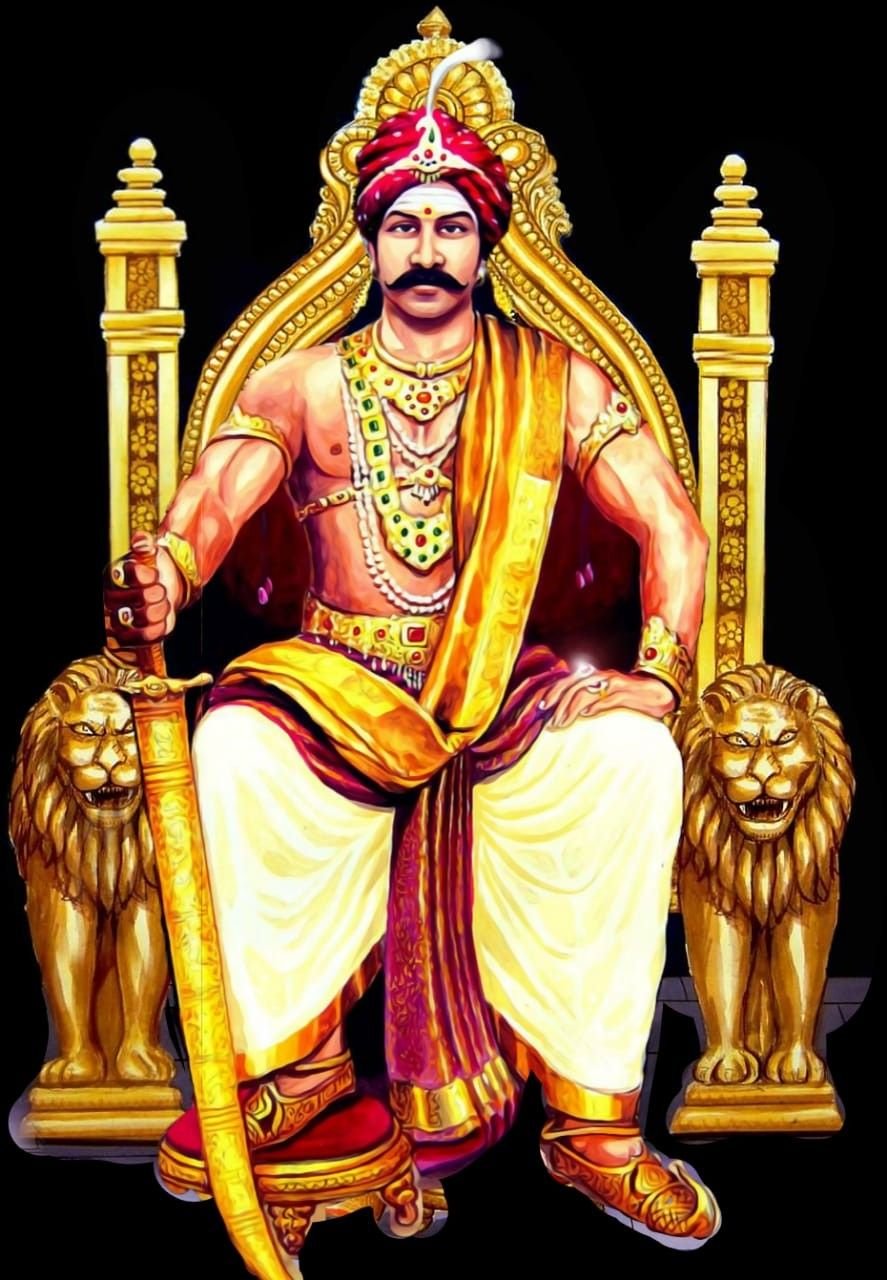
Story Begins
Legends from the time of King Vikramaditya serve as the basis for this story. Once upon a time, the seven gods who presided over the days of the week met in council. There is also the presence of Rahu and Ketu. Both Rahu and Ketu point to a single question. Which god has the biggest influence among us? was the question posed. There was no agreement on this matter.
As a result, they looked to Devraj Indra for a ruling. Devraj Indra believed that the other gods would be dissatisfied with his judgement if he decided in favour of any one of them. Respectfully, he said to the gods, “Esteemed divinities, I, too, possess qualities akin to your own.” So, I’ve been thinking a lot about how difficult it is to rank people on a scale of greatness. So, how can I go about doing something so discerning? I can’t give an objective evaluation.
Everyone should seriously consider making a trip to Earth. Throughout history, King Vikramaditya has stood out. His outstanding judicial abilities have earned him worldwide acclaim and respect. At the story’s climax, every god and goddess presented themselves to King Vikramaditya.
When all the gods showed up at King Vikramaditya’s court, he showed them the utmost respect and begged them for help in whatever way they could. The people told him about their plight. Vikramaditya found the mission extremely difficult. However, the king took on this challenge with grace because of his strong sense of responsibility.
As a result of his deliberation, seven thrones were set up. Gold, bronze, brass, tin, zinc, mica, and iron were used in the sequential construction of the thrones in question. The attendees were assigned seats according to a numbered system. The gold throne was number one, and the iron throne was in third place. Then, King Vikramaditya humbly prayed to the seven gods, asking that they bless the throne in their own unique ways. The Sun god Surya sat on the golden throne, while the planet Saturn’s respresentative, Shani, chose the iron throne.
When the seven gods took their places, Vikramaditya addressed them: “You are entitled to decide your own placements, and no other influence may impose my judgements onto you. Hearing this, the god Shani (also known as Saturn) got up from his seat and spoke to King Vikramaditya, expressing his displeasure at being placed at the bottom of the godly hierarchy.
You don’t know the half of what I’m capable of. The sun stays in one Zodiac sign (Rashi) for almost a month, and in Mars for about a week and a half. Jupiter, in contrast, can stay in a Zodiac for up to thirteen months, while Mercury and Venus can only stay for a single month. The movements of Rahu and Ketu follow a cyclical pattern every eighteen months.
However, my authority only allows me to rule over a zodiac sign for a period of time between 2.5 and 7.5 years. The term “Sade Sathi” is widely used to describe this era. Because of the Sade Saathi era, even the most powerful gods were afraid. When people were angry with Rama, the result was not his elevation to the throne but rather his expulsion. It is now your turn, so be ready. After he finished expressing these ideas, Shani went back.
During the brief “Sade Sathi” time, Shanidev seized control of Vikramaditya’s Zodiac. The sade sathi period of the monarch then began and lasted for seven and a half years. Shani Dev posed as a horse trader and travelled to the kingdom governed by Vikramaditya, where he offered the monarch and queen a variety of exceptionally beautiful horses.
The Story Begins: The Sadesati and the King Vikramaditya

People were also saying nice things about the horses in question. When King Vikramaditya heard about the strange horses, he sent Ashawapal to find the best one possible. When Ashawapal returned with a beautiful horse, the king was so overjoyed that he immediately wanted to ride it. However, at one point during his ride, the horse suddenly and with incredible speed disappeared into thin air. After a short while, the king found himself in the middle of a vast and forested area.
The person clearly appeared exhausted. The huge size of King Vikramaditya’s kingdom presented a number of difficulties. Shanidev, a deity in Hinduism, was blamed for everything that went wrong.
At the Ujjaini palace, Queen Madenlekha voiced her concern for King Vikramaditya. Shani Dev was the religion of choice for Queen Madenlekha. The woman begged Shani Dev to intervene so that her husband wouldn’t be in danger. Shanidev promised to free your husband after hearing your pleadings on behalf of Queen Madenlekha, but only if he could fulfil his karmic duties.
Due to King Vikramaditya’s absence, there were few state ceremonies held in his honour. After a long journey, Vikramaditya reached a nearby city, where he met an accomplished businessman. That other businessman also forgot to introduce Vikramaditya. King seemed like he was trying to beg for money. Compassionately, the shopkeepers drove him back to his house and set up food delivery. On that day, thanks to the beneficence of the deity Shani Dev, business owners received higher profits.
Beginning of Therapeutic Story
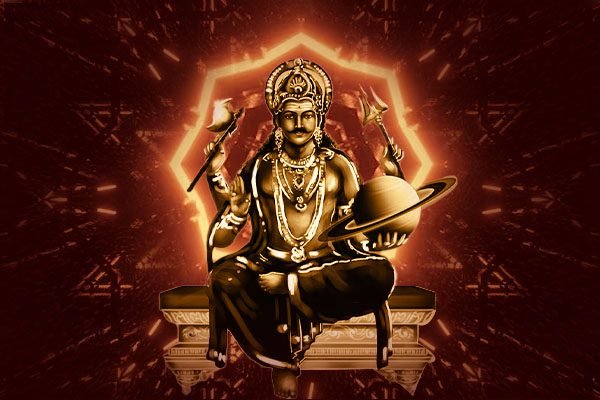
But he saw this person (known only as the King) as a stroke of luck. Keeping this in mind, he decided to keep him living in his home and working for him.
The king was going through a Sade Sathi period. The guy moved into the businessman’s home while using a false name. After some time had passed, the entrepreneur’s children were united in marriage. Within the framework of this marriage, it was Vikramaditya who took on the mantle of responsibility. Together, he and the daughter of a mutual business associate went shopping for wedding essentials. Vikramaditya met Shanidev, who was acting undercover during a business deal, but eventually revealed his genuine identity. Vikramaditya was then shown a picture of a duck by Shanidev.
Everything in the marriage seemed to be going smoothly. The bride’s jewellery mysteriously vanished before the wedding. A duck, as illustrated in the accompanying pictorial representation, swallowed the necklace. The business owner’s wife questioned the king about the necklace, but the king was at a loss to explain its significance to her.
The suspect was apprehended by a King Chandrasen loyalist because he or she suspected the monarch of being a thief.
It was widely believed that King Vikramaditya’s greatest threat came from King Chandrasen. King Chandrasen was filled with overwhelming happiness at seeing Vikramaditya. He gave the order for his troops to cut off both of King Vikramaditya’s limbs at the same time. Vikramaditya spoke out in surprise when he heard this order. His hands and feet were nonetheless chopped off by the soldiers.
Beginning of Punishment ;Lessons & Life Learning
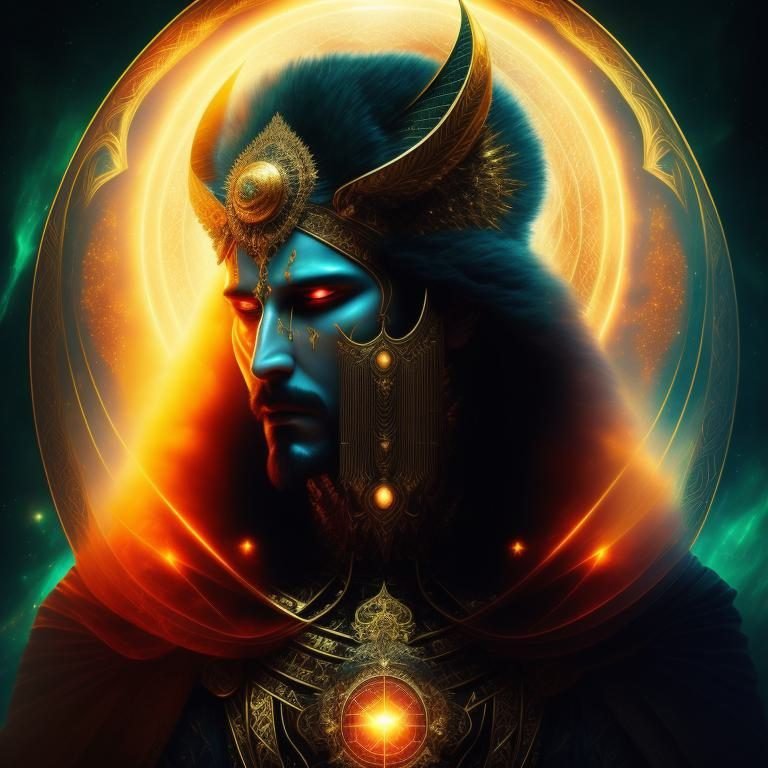
Both of the king’s limbs had been amputated. He was standing around like a homeless person. After seeing someone working on an oil seed crusher, often known as a “Teli,” the observer felt sympathetic towards the operator. In addition to feeding him, he drove him back to his house. In addition, he treated the king’s wounds, and after a few days, Teli taught him how to use the bullocks and the grinding machine effectively. Vikramaditya is currently at full operational capacity. Time continued to tick along. Sade Sathi’s rule was coming to a close.
The king was preoccupied with his chores on a night when he was alone. A musical composition was being sung by the person. The vocals had a soothing, tuneful sound. The person in question was disturbing the nighttime peace with their vocalisations. A princess in the nearby kingdom heard a beautiful song, and she became deeply enamoured with the singer, named Vikramaditya.
The royal lady called for her butler and introduced the entertainer to him. A short time later, the servant came back and informed the princess that the singer in question was a subordinate of Teli who also happened to have a physical impairment. Princess, after witnessing the aforementioned performance, decided to wed the singer in question so that she wouldn’t have to go through life alone. Princess’s parents were hurt and angry when they found out about this decision. But they were ready to make that call in the end.
The king, who is the princess’s father, addressed the Teli with the goal of proposing a marriage alliance. The king gave Teli orders to help arrange the wedding of the disabled man to the king’s daughter. Although Teli first had reservations about getting married, she eventually changed her mind and showed more enthusiasm for the institution of monarchy.
The marriage between the princess and Vikramaditya, who is handicapped, had been dissolved. However, the princess’s parents voiced their disapproval. King Vikramaditya got a little shut-eye during the nighttime hours of his honeymoon. King Vikramaditya dreamed that the god Shani Dev appeared to him and told him that in the pantheon of gods, he was at the bottom. The aforementioned occurrences occurred as a result of my viewpoint being influenced by your particular experiences.
This person’s poor decision-making has caused them a great deal of emotional suffering. However, the time of Sade Sathi is over. The news brought the king great happiness, and he immediately began praying to Shani dev in the hopes of avoiding future misfortunes of the same nature.
The god agreed to the king’s pleadings and then disappeared.
When King Vikramaditya awoke, he was shocked to find that his hands and feet still looked the same. The princess and her family were overjoyed to be present for this. The monarch (the princess’s father) was overcome with joy and thankfulness upon learning of the presence of a disabled individual who bore the title of monarch Vikramaditya.
This information was quickly transmitted to all areas and those nearby. The commercially active person learned about this as well, and felt regret for their treatment of Vikramaditya as a result. He went up to Vikramaditya and apologised humbly for his behaviour, saying, “I sincerely apologise for my inappropriate conduct towards you.”
In addition, he invited him to join him for supper. King Vikramaditya obligingly agreed to the man’s request, and the next day he attended a dinner party at the mansion of a wealthy businessman. King Vikramaditya made the following declaration while dining at the home of a wealthy businessman: “I shall partake of my evening repast within the very chamber where the aforementioned necklace was misplaced.”
Without asking any questions, the businessman set up the dinner in the allotted space. The Vikramadityas were stunned to discover that the necklace’s source was the identical duck shown in the painting. Everyone present in the house witnessed the imaging phenomenon. The businessman was so overjoyed that he also decided to set up a marriage between his daughter and Vikramaditya.
After being away for a while, King Vikramaditya has returned to his domain. When Vikramaditya returned to his kingdom victorious, Queen Madenlekha was overjoyed. After this, King Vikramaditya ordered his courtiers to employ drums to announce an important announcement during the next court session.
The statement highlighted God Shani’s strength by comparing it to that of other deities. As a result, the courtiers were commanded to show their devotion to Shani dev by fasting every Saturday.
As a result, King Vikramaditya instituted a weekly sacrosanct ceremony on Saturdays throughout his dominion to pay homage to Shani Dev. This ends the story of Vikram Aditya and Shade Dev, which gives us lessons about humility, honesty, and how karma gets fruitful.
Read more on Karma and Astrology ;
The Karma Theory in Vedic Astrology, Part 1
The Karma Theory in vedic astrology part 1: Know about Astrology, Past life and karma Connection ?
Vedic and Religious Remedies for Saturn Sade sati and Dasha periods:
1.In order to demonstrate devotion to Shani Dev, it is customary to ignite a mustard oil lamp within the temple premises, specifically in front of the Shani Dev Idol, on a weekly basis. This ritual is to be observed on Saturdays, either for a duration of 11 consecutive Saturdays or 7 consecutive Saturdays during the nighttime hours or one should make a practise for whole life.
2.On Saturdays, it is customary to distribute Khichdi, a dish prepared with Kaali Maa Ki Daal and rice, to both the impoverished individuals and the devotees at the Shani Mandir or shrine.
3. Utilize black sesame seeds and black lentils (Vigna mungo) in conjunction with til or mustard oil, afterwards applying the resulting mixture onto the iron or black stone idol of Shanidev situated within the temple. Perform this task on a weekly basis, specifically on 40 consecutive Saturdays or alternatively on 11 consecutive Saturdays or one can follow it for whole life, make sure intension should be with mercy and self resolution .
4.On a designated day, individuals may provide leather chappals, blankets, and umbrellas to underprivileged individuals in need, in the vicinity of the Shani temple.
5.On a designated day of the week, specifically Saturday, individuals are encouraged to provide sustenance to individuals afflicted with leprosy or physical disabilities in close proximity to the Shani Dev Temple.
6. Read the Shani Stuti after lighting a Til oil lamp under a Pipal tree on Saturdays. Below here is the
Shani Stuti.
Konastha pingalobabhruh
Krishnoroudraantakoyamah
Souri, shanaischaro mandah
Pippaladishu sansthitah
Adho-drushte namasthubhyam vapuhshyaama namosthutheNamo Manda-gathe thubhyam nisthrinshaaya namo namah
Thapasa dagdha-dehaya nithyam yogarathaya cha
Namesthe gyaana nethraya kashyapathmaja sunave
Thushto dadasi Vai raajyam rushto harasi Thathkshanaath
Devaasura manushyaashcha pasupakshisareesrpaah
Thvaya vilokithaah saure dainyamaashu Vrjanti cha
Brahmaa shakro yamashchaiva rishayah saptha-tharakaah
Rajya bhrashtaashcha t’e sarve thava drishtyaa vilokithaah
Deshaa nagara graamaa dweepashechai vaadrayasththaa
Raudra Dhrushtyaa t’u ye drushtaah kshayam gacchanti thath kshanaath
Prasaadam Kuru me saure varaartheham thavaashrithah
Saure kshamasvaaparaadham sarvabhutha hithaayacha
8.One effective approach for mitigating the impacts of Sade-sati and other Dasha influences is to engage in the frequent recitation of the Hanuman Chalisa and Bajrang Baan, as a means of appeasing Hanuman ji.
9. It is recommended to engage in the act of offering prayers to Lord Shiva, as Lord Shiva is regarded as the spiritual guide or mentor of Lord Saturn. To attain a good life, one may opt to engage in the practise of Rudra Abhishek with Bel Patra and other Pancha Amritam, or alternatively, recite Rudra Ashtakam on Mondays and Saturdays.
10.It is recommended to provide crows, which are considered the vehicle of Lord Shanidev, with a prepared meal from one’s own morning repast on a daily basis. It is imperative to exhibit kindness and compassion for individuals occupying various positions of lower socioeconomic status, such as maids, servants, vendors, hawkers, labourers, cleaners, and other individuals engaged in low-grade occupations. It is imperative to refrain from attempting to appropriate their financial resources or subjecting them to any form of harassment. Ensure timely payment of their obligations and earn the affection of Saturn.
11.It is imperative to demonstrate unwavering loyalty for one’s parents (including grandparents) and provide them with affectionate care throughout their lives. This practise is akin to the deep affection that Lord Shani-dev holds for his mother, emanating from the depths of his heart. It is imperative to refrain from exhibiting contempt and carelessness towards one’s parents, since such actions may potentially incur the displeasure and consequences associated with the divine entity known as Shani Dev. Despite encountering certain conflicts with his father, Surya Dev, Shani Dev harbours genuine reverence for him deep within his being.
12.One effective remedy for mitigating the effects of Sade Sati is to engage in the daily recitation of the Maha-Mantra dedicated to Lord Saturn.
“Om nilanjana samabhasam | Ravi putram yamagrajam ||
Cahaya martanda samhubhutam | Tama namami Shanescharam||”
13.Individuals experiencing the astrological phenomenon known as Sade Saati are advised to diligently repeat the Shani Mahamantra a total of 23,000 times over a span of either 7 or 12 years. The recitation of the Shani Mahamantra should be completed within a period of 23 days. Therefore, by the regular recitation of the Shani Mahamantra using a ‘mala’ 10 times per day, the completion of the recitation will occur during a span of 23 days.
14. Recite the 108 appellations of Shani Dev, also known as Shani Dev Ashtottara Shatnamavali daily
Conclusion
Both versions aim to be as comprehensive as possible in their treatment of Saturn, Karma, and Sadesati. Since Sadesati is such a massive Saturn transit with so many varying effects, it’s crucial to have a thorough understanding of these phases before making any predictions. assumptions & any guess work. Despite its unpleasantness, adversity provides us with an opportunity to toughen up and become more resilient. In order to meet the challenges of Saturn Sadesati with greater self-awareness, fortitude, and optimism, it is helpful to have a firm grasp on the period’s underlying features and impacts. Keep in touch, keep sharing, never stop teaching and learning, and do your part to support the blogs you read by clicking on the ads that run on them. Do your share thoughts and ideas in comment section to improve future blogs.
Keep Reading, Keep Sharing and Stay connected !
Jai Shani Dev !
Expressing gratitude and extending salutations,
Rocky Jamwal
Source and Reference :
https://www.tamilbrahmins.com/showthread.php?t=26113
http://www.shanidev.com/the-cure-for-sade-saathi.html
https://www.quora.com/profile/Bharadwaj-Astrologist-Psychic-Healer
Read More on Karma;
Views: 708



